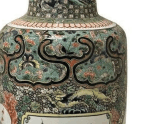
My grandfather John Wilbur Carr grew up in Jefferson County, Pennsylvania in the town of Punxsutawney. His ancestors settled in Western Pennsylvania after the Wyoming Valley Massacre of 1778 forced them from the farm they had, near the present-day Nanticoke. The family was never well off, however, with each generation they became increasingly well educated. My grandfather ‘Wib’ attended Alfred University, as well as Rensselaer Polytechnic Institute. He married my grandmother and had three children. Wib eventually became a highly celebrated high school Chemistry teacher (he was also a fifth generation ‘chucker’) in the Bellmore, NY School District. He tinkered, invented and played every chance he got.
One oral history that circulates among my family is about the fascination my grandfather, a scientist, had with the ‘science of play’. They say he was like this




